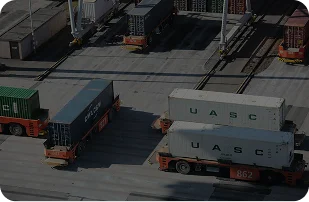Backorder vs Out of Stock: Complete Decision Framework

Your bestselling product just went viral, orders are flooding in, but your warehouse is empty. Do you tell customers they can still buy it with a delivery delay, or do you shut down sales entirely? This choice between backorder vs out of stock can make or break your customer relationships.
For growing businesses shipping 300+ orders monthly, inventory challenges test both your customer retention strategies and operational resilience. The decision isn’t just about managing expectations; it’s about positioning your business for sustainable growth while maintaining customer satisfaction.
Key Takeaways
- Backorders allow customers to purchase temporarily unavailable items with promised delivery dates, while out-of-stock items cannot be purchased until restocked
- Backorders maintain sales and customer relationships during shortages but require careful management to avoid frustration
- Out-of-stock situations halt sales completely but provide clearer customer expectations about unavailability
- The right choice depends on your product type, customer base, and operational capacity
- Clear communication with customers about availability status and realistic timelines builds trust and loyalty
Backorder vs Out of Stock: Understanding Your Options
Backorders occur when customers can purchase temporarily unavailable items with the understanding they’ll receive delivery once new inventory arrives. Your business accepts the order, provides an estimated shipping date, and maintains the sale while working to fulfill the request.
Out-of-stock status means items are completely unavailable for purchase. Customers cannot place orders, your store shows unavailability, and no sales are processed until inventory returns.
The customer experience differs dramatically. Backorders offer hope with estimated delivery dates, allowing customers to secure purchases despite delays. Out-of-stock creates uncertainty and forces customers to wait indefinitely or shop elsewhere.
From operations perspective, backorders maintain cash flow but increase complexity through order tracking and customer communication. Out-of-stock situations simplify operations by eliminating promises but completely halt revenue for affected products.
The Financial Impact of Your Choice
Revenue implications hit immediately. Backorders preserve sales during shortages, maintaining cash flow when you need it most. Out-of-stock situations create complete revenue loss for affected products, potentially lasting weeks or months.
Customer lifetime value considerations often outweigh short-term revenue impacts. Backorder management that includes transparent communication can strengthen customer relationships and increase loyalty. However, poorly managed backorders with unclear timelines damage trust more than out-of-stock honesty.
Operational costs vary between approaches. Backorders require additional customer service resources, order tracking systems, and warehouse space allocation for delayed shipments. Out-of-stock management focuses resources on restocking and demand capture through waitlists.
Research shows that 43% of customers purchase from competing brands when facing out-of-stock situations, making inventory management decisions directly impact customer retention and long-term profitability.
How to Manage Each Scenario Successfully
Backorder Management Best Practices
Start with realistic customer expectations. Provide honest delivery estimates based on actual supplier commitments rather than optimistic projections. Research shows backorder durations typically range from a few days to several weeks, with customer tolerance varying significantly by product type and business relationship.
Create automated order tracking that provides regular status updates without requiring customer service intervention. Modern inventory management systems enable real-time visibility and automated customer communications. Customers appreciate transparency about order status and timeline changes.

When delays extend beyond original estimates, acknowledge the situation honestly and provide updated timelines. Consider offering compensation for extended delays—shipping discounts or small credits demonstrate your commitment to customer satisfaction without waiting for complaints.
Avoiding common order fulfillment mistakes helps prevent backorder situations from becoming customer service disasters.
Out-of-Stock Response Strategies

Focus on capturing customer interest for future sales rather than simply turning people away. Set up waitlist functionality that notifies customers when items become available, allowing you to gauge demand and prioritize restocking decisions.
Suggest alternative products with similar features. Train your team to understand product relationships well enough to offer meaningful substitutes that maintain sales while building appreciation for your expertise.
Provide clear timelines for when items might return, even if dates are uncertain. Customers prefer honest uncertainty to false promises. Use this time to streamline your shipping operations and prevent future stockouts.
Communication Frameworks for Both
Transparency at point of sale sets proper expectations. Clearly mark backorder status and estimated delivery dates on product pages and during checkout. Use specific language like “expected to ship in 3-4 weeks” rather than vague terms like “shipping soon.”
Develop communication templates that maintain your brand voice while providing necessary information. Professional, empathetic messaging that acknowledges inconvenience while emphasizing commitment to fulfillment helps maintain positive relationships during delays.
Making the Right Choice: Decision Framework
Product category factors influence the appropriate choice. Electronics and appliances customers often research extensively and commit to specific models, making them more willing to wait. Fashion and perishable goods customers typically want immediate gratification and readily switch to alternatives.
Customer base considerations matter significantly. Business customers often accept longer delays due to planning cycles and specific requirements. Consumer purchases, especially impulse buys, favor immediate availability or clear out-of-stock status.
Business model alignment affects which approach serves your strategy better. Subscription services and repeat customers benefit from backorder management that maintains ongoing relationships. One-time purchase businesses might prefer out-of-stock approaches that avoid operational complexity.
Operational capacity determines your ability to manage each approach. Assess your customer service bandwidth, warehouse space for delayed shipments, and cash flow for handling potential refunds before committing to backorder management. Partnering with customer-focused logistics providers can provide the infrastructure and expertise needed for effective backorder management.
Real-World Examples from IWS Clients
A health and beauty brand working with IWS faced sudden demand spikes for their skincare line. By offering backorders with clear delivery windows and using real-time inventory tracking, they maintained 95% order fulfillment while keeping customers informed throughout the process.
A consumer goods company chose out-of-stock status for seasonal items but used waitlist integration to capture demand. When inventory returned, automated notifications to 300+ waitlisted customers resulted in immediate sales recovery.
Understanding how IWS works demonstrates how proper systems and processes can prevent backorder challenges entirely through predictive analytics and automated reorder triggers that maintain stock levels before they impact customers.
Frequently Asked Questions
How long should I allow backorders before switching to out-of-stock?
Customer tolerance varies significantly by product type and business relationship. Research shows backorder durations typically range from a few days to several weeks. Monitor your order cancellation patterns—if cancellations increase substantially, consider shortening backorder timeframes or improving communication about realistic delivery dates.
Can backorders hurt my reputation?
Poorly managed backorders with unclear timelines damage trust. However, transparent policies with realistic expectations often build stronger loyalty than out-of-stock notices. The key lies in conservative estimates and regular updates.
Should I charge immediately for backordered items?
Best practice involves authorizing payment but not processing charges until items ship. This protects both parties if cancellations become necessary due to extended delays.
How can small businesses compete on inventory availability?
Focus on personalized service and transparent communication rather than matching large retailers’ inventory depth. Partner with providers who offer specialized solutions for growing businesses and understand the unique challenges of scaling operations.
What’s the difference between backorders and pre-orders?
Pre-orders allow purchases before initial release dates with promotional pricing. Backorders occur after products have been available but are temporarily out of stock. Pre-orders have more predictable timelines tied to planned launches.








































